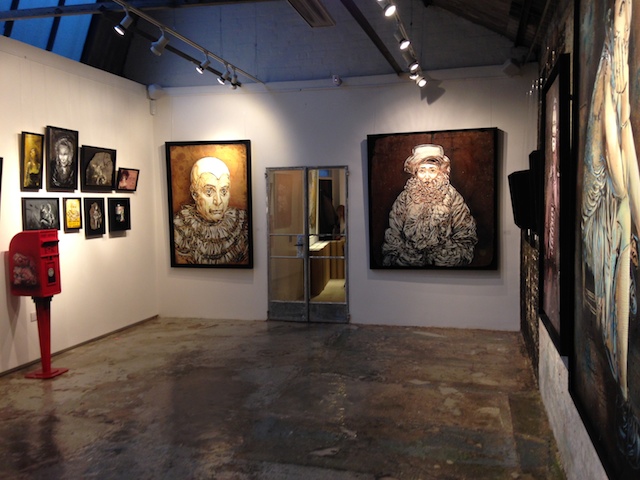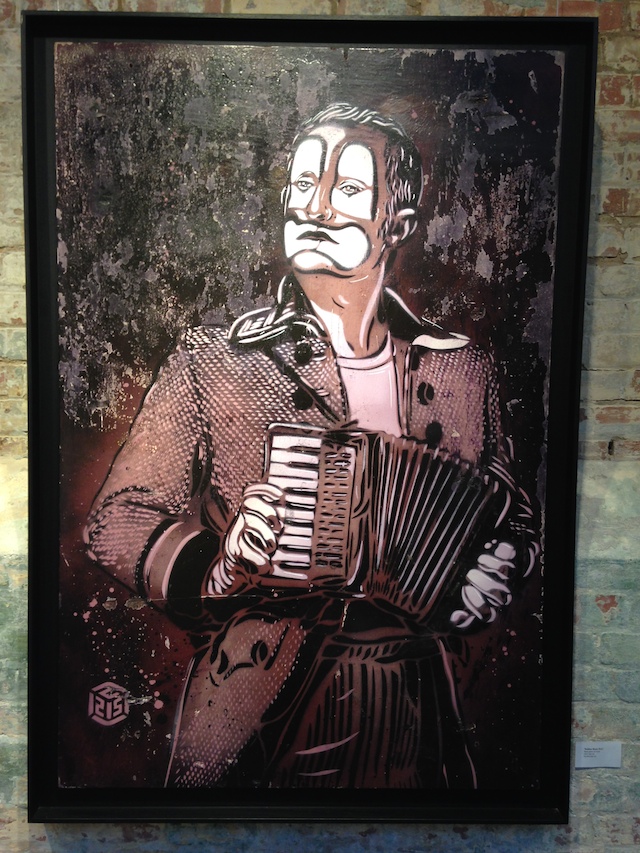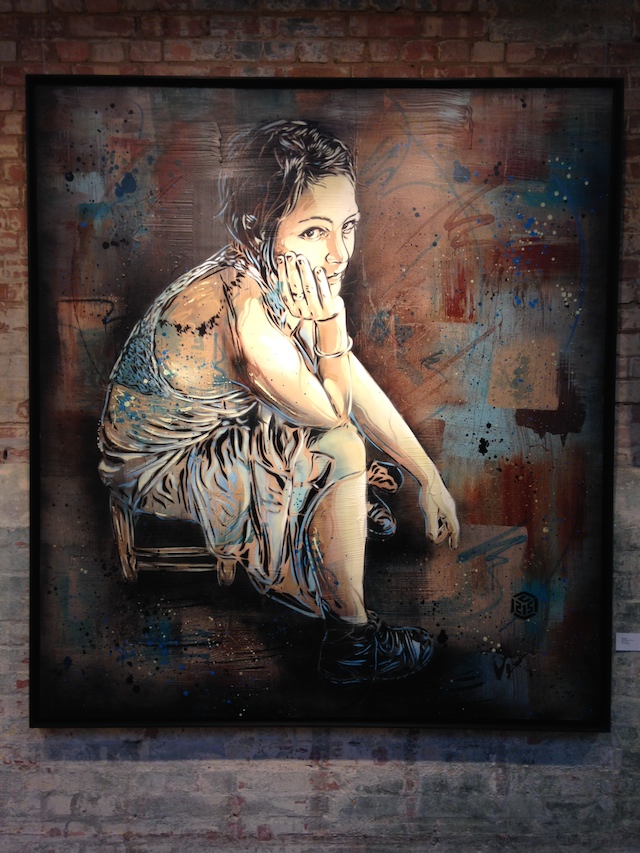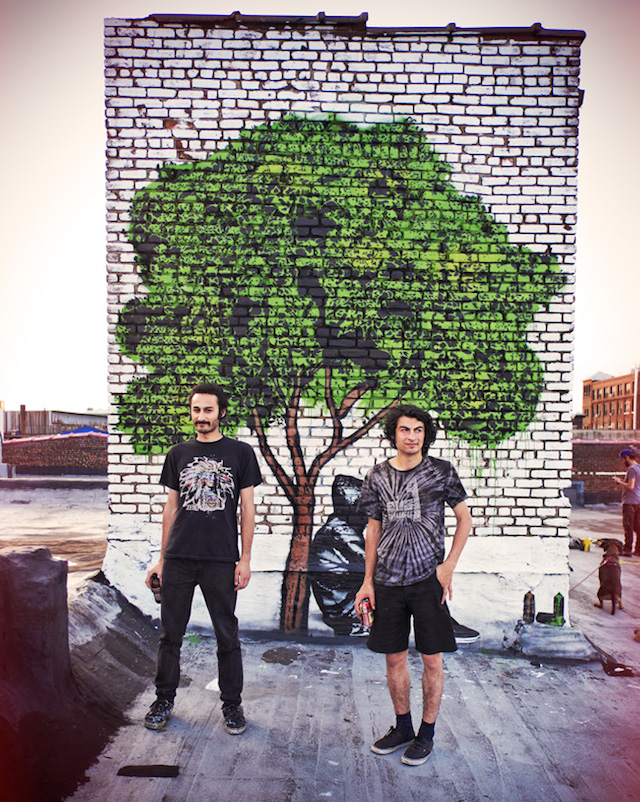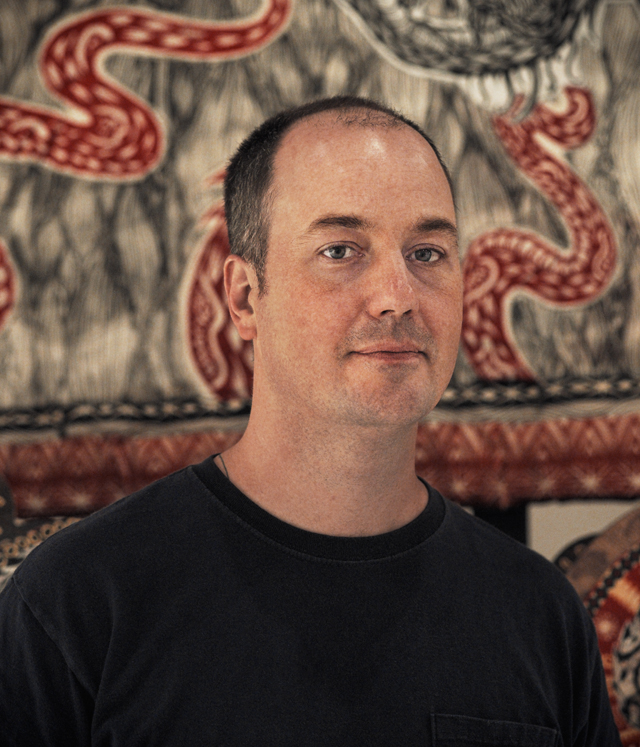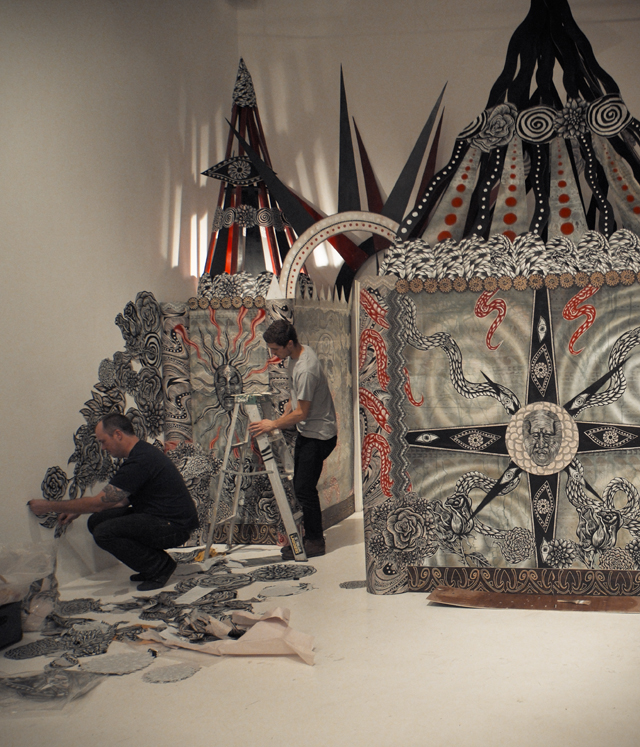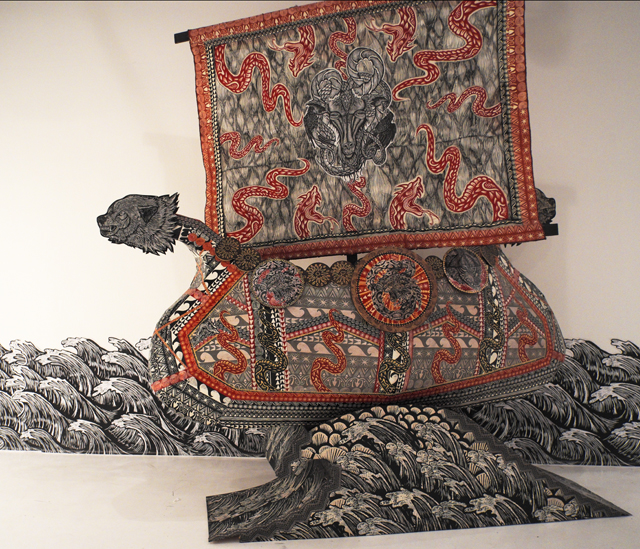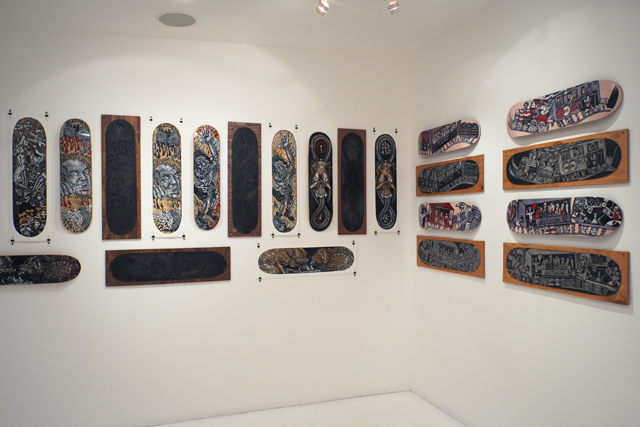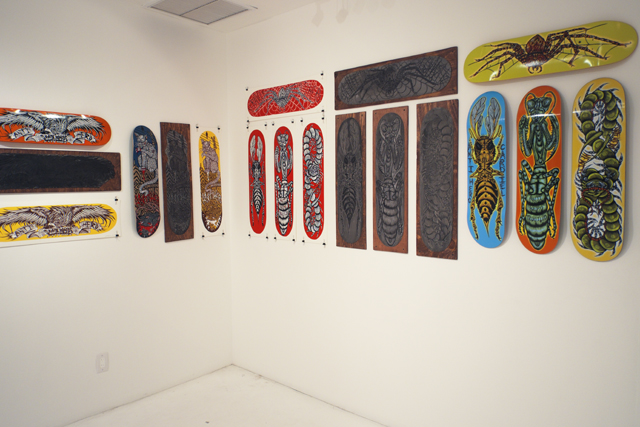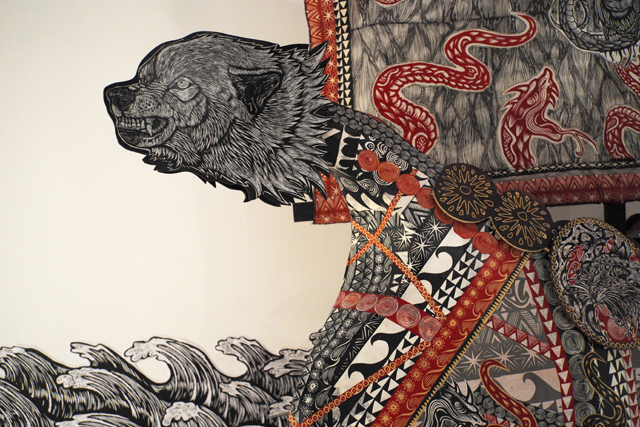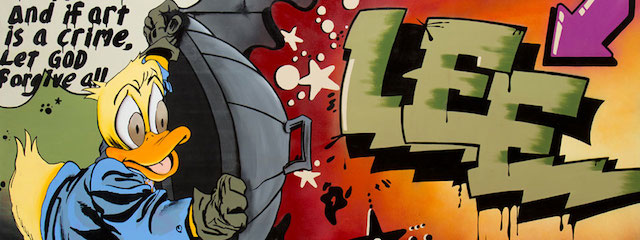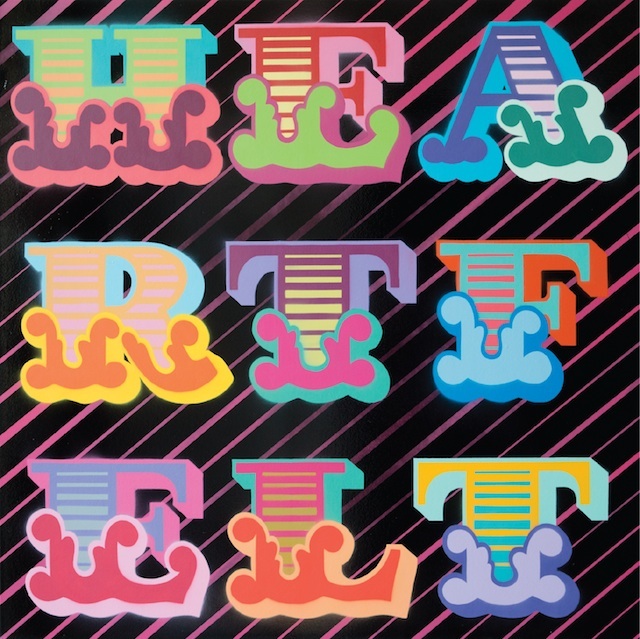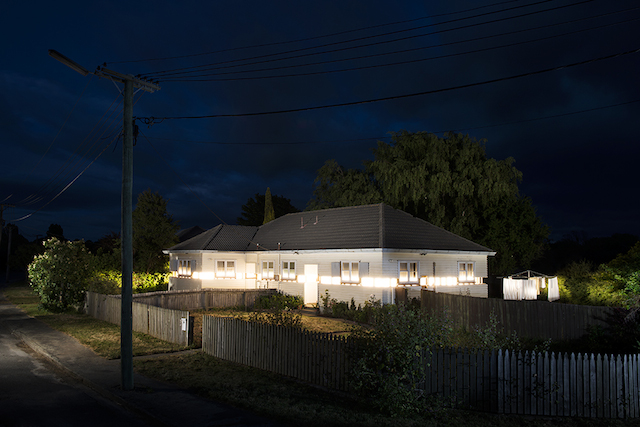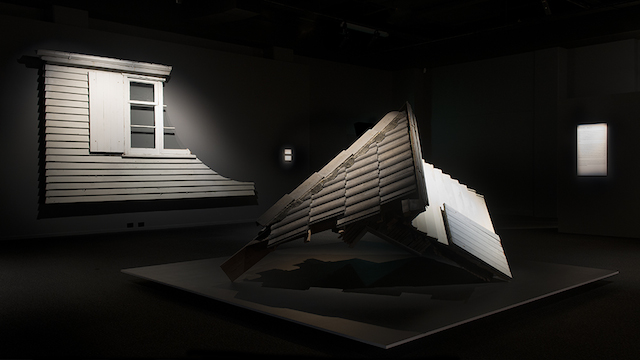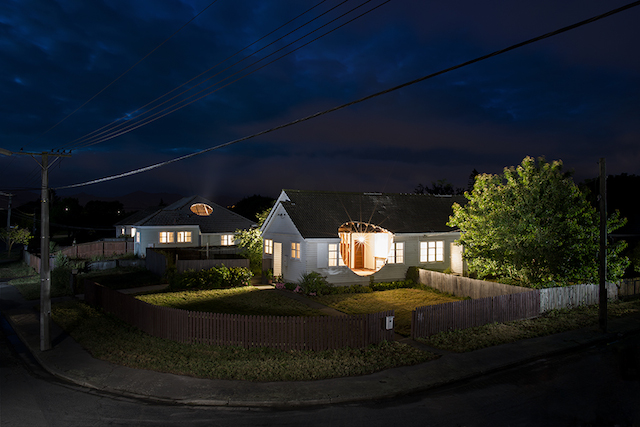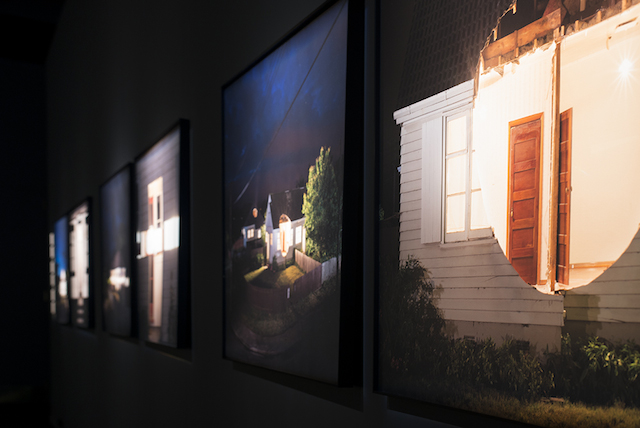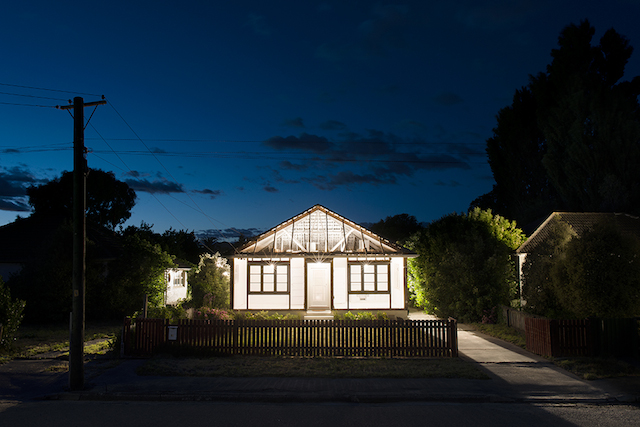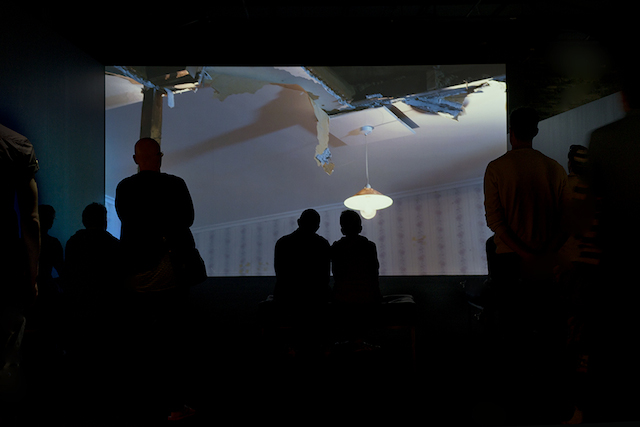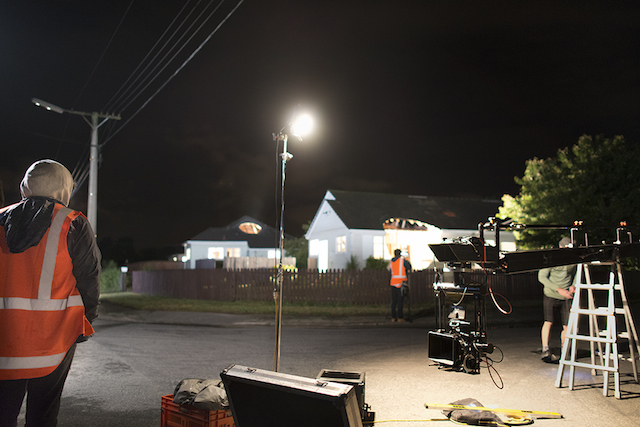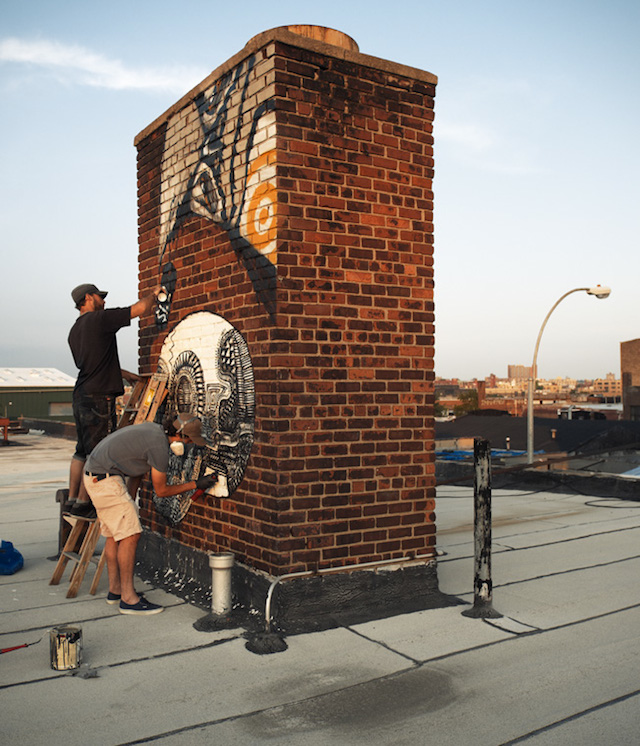
One afternoon this past summer, Tim Hans went up to a Brooklyn rooftop and found a bunch of artists having fun and painting together. In November, that rooftop became associated with a horrible tragedy. While the murders that occurred nearby have nothing to do with the art that was painted there, it seems important to acknowledge how the space changed after these photos were taken. At the time, this rooftop was one of the most interesting and fun spaces for artists to paint in New York City, and Tim’s came way with some beautiful photos, so it seemed a shame let tragedy define that space and leave these images locked away. Two of the artists that Tim photographed on that rooftop were Never and Zio Ziegler, who were working on a collaborative piece. In our continuing series of photo-portraits of artists by Tim, and I asked Zio and Never the same set of questions over email.
RJ: How did you end up collaborating that day?
Never: The dialogue went something like this…
Zio: Ayo, I’m in Brooklyn with my homey Ian Ross. I like your SHIT, wanna hang out?
Never: Werd, I like your SHIT too. We should get a hotel, here’s my number…Sext me. (We meet in person for the first time) Never: So what kind of SHIT brings you to NY?
Zio: I painted some SHIT on the side of a surf shop in Williamsburg.
Never: Werd, got any scrap cans? Some people are hanging out and painting some SHIT on a rooftop nearby right now. Wanna go?
Zio: SHIT yeah, Lets do it!
Zio: I’ve admired Nev’s work for a while, and we have a bunch of mutual friends, so I gave him a shout when I was in NY. I had painted the side of Pilgrim, and despite having food poisoning wanted to make the most of the NYC trip, and paint as many spots as possible. We met up in Bushwick, and started to look for walls, ended up on a rooftop and jammed out.
RJ: Do you usually like collaborating on murals?
Never: I do like collaborating on murals but I’m pretty selective of who I do that with. I don’t really consider what we did that day a collaboration as there wasn’t really any head-butting involved. I just did the same SHIT I always do and he put a skull under it. It was more of a quick little jam session than anything. At some point we intend to do a for real collabo. We’re both busy dudes, but we’ll make it happen at some point. And when we do, our highly acclaimed PR team will ensure that it’s picked up by every news outlet in existence. Just you fucking wait.
Zio: I don’t collab a lot, but when I do its because I really admire the other artists process and work. The piece and the conversation go in parallel and when that happens, it’s all good.
RJ: How does working with another artist change your own process?
Never: It forces you to try out different techniques than your own and helps you work outside of your usual comfort zone.
Zio: It allows me to expand my perspective, and see more possibilities in creating my pieces.
RJ: How have the events that took place so nearby your mural affected you or how you think of that piece?
Never: The work I did on that roof has nothing to do with the horrible event that happened up there several months after. I’m thankful I got to meet Icy and Sot and they were so kind to invite us to paint with them. More so, I’m thankful those two are still here with us today. It was a fun day with good company, that’s all there is to it.
Zio: The work has nothing at all to do with that terrible event, It’s awful and my heart goes out to everyone effected by that tragedy.
RJ: Which of you is cooler?
Never: Zio has more followers on Instagram than I do so he’s definitely cooler.
Zio: Never for sure, he’s got more friends on myspace.
Photo by Tim Hans
